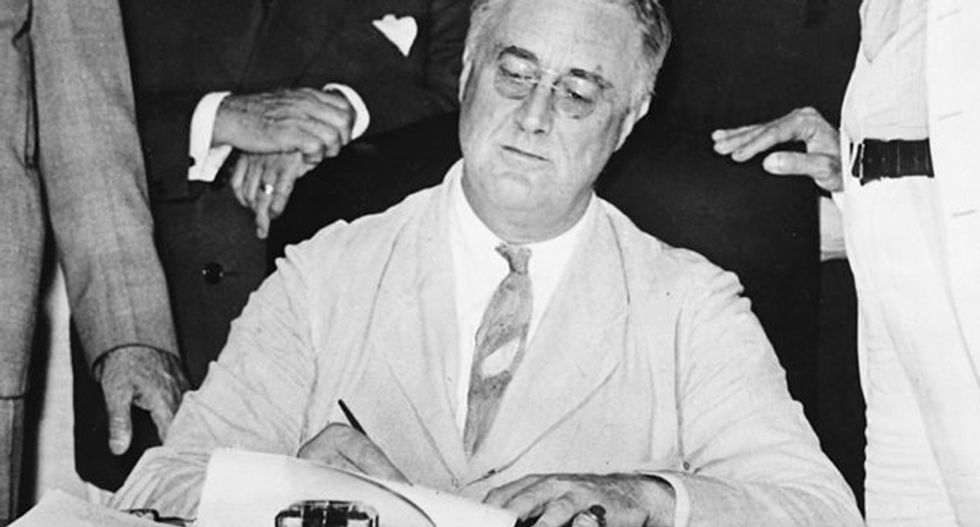A new ugly streak in American politics
In the latest example of a new cruel streak in modern politics, several politicians are openly calling for blocking aid to California in the wake of the deadly wildfires. It’s wrong for several reasons.
First, Californians contributed to that aid and are among the biggest givers in Federal income taxes. Second, this is being suggested by politicians in states which pay on average far less of the share in income taxes. Third, those suggesting stopping or dangling aid will demand unconditional assistance when they need help, if history is any guide. Finally, it’s hard to find this to be any part of our American or Christian heritage.
According to Merideth Lee Hill of Politico, “[House Speaker] Johnson told reporters, “we’ll see where it goes,” acknowledging that he, personally, supported putting “conditions” on California wildfire aid. “That’s my personal view,” he said.”
Another Congressman, this one from Ohio, said as much about California aid according to Amber Baker with WTRF: “If they want the money, then there should be consequences, requiring them to change their policies.” An Alabama politician concurred.
It reminded me of two years ago when a train carrying toxic chemicals derailed in East Palestine, Ohio, producing a terrible plume of dangerous smoke. Did Congress withhold aid until Ohio agreed to better regulate their trains for having more safety personnel aboard (instead of cutting them) or requiring better breaking systems? Such policies should be implemented, but those poor residents should not have been held hostage to a political battle. In fact, the IRS made those relief checks non-taxable, even though the district voted over 70% for Trump in 2020. How you voted in the last election shouldn’t determine whether you get aid or not, right?
I checked the National Taxpayers Union Foundation analysis of who pays when it come to taxes. California pays the most in raw numbers, but the state ranks fifth in average Federal Income Tax paid per person. Ohio ranks 39th. Louisiana ranks 45th. Alabama is 46th on average.
According to SmartAsset.com, California ranks 41st for being dependent upon the Federal Government, one of the ten states least dependent upon the U.S. Government. Louisiana is eighth for being the most dependent upon Federal Government aid. Alabama is the ninth most dependent state on government money.
Imagine if Californians withheld aid to Louisiana or Alabama after a Category 5 hurricane.
Now I’m sure the residents of these states are just as likely to donate to disaster relief causes. Their representatives could learn from their constituents.
Blocking aid to another state in need is a relatively new ugly streak in American politics. When Hurricane Sandy hit New Jersey, a number in Congress voted against aid, even though SmartAsset.com shows “For every $6.28 New Jersey forks over to the federal government, it receives $1 back.” Well, some of the same politicians who said nay to New Jersey shamelessly asked for aid just a few years later when tornados and hurricanes hit their states. New York and New Jersey politicians thankfully did not play the same “tit-for-tat” game for Texas for Hurricane Harvey.
An iconic American image involves people passing water buckets to help a neighbor in need of putting out a home fire. None are trying to slap “conditions” on the help or blocking firefighting help in exchange for some quid-pro-quo. That’s because it’s just not the American spirit. Once people are cared for, we can debate policy, without holding hostage that aid to those in need.
John A. Tures is a professor of political science at LaGrange College in LaGrange, Georgia. His views are his own. He can be reached at jtures@lagrange.edu. His “X” account is JohnTures2.- 'Frustrating': LA fire official slams GOP lawmaker’s response to crisis ›
- 'Lies and disinformation': Critics say Trump got 'nothing right' about LA wildfires ›
- How Santa Ana winds fueled the deadly fires in Southern California ›
- 'It looked like an atomic bomb': Welcome to our very own not-so-slow-motion apocalypse ›
- Trump threatens to withhold aid for fighting California wildfires at rally in Golden State ›

 President Franklin D. Roosevelt signs the Social Security Act . (FDR Library Digital Collection.)
President Franklin D. Roosevelt signs the Social Security Act . (FDR Library Digital Collection.) 